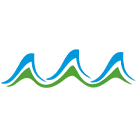Revolutionizing Healthcare Monitoring with mmWave Radar
Healthcare technology is evolving rapidly, and non-contact monitoring has become increasingly important for hospitals, elderly care facilities, and rehabilitation centers. Traditional wearable devices can be intrusive and uncomfortable for patients, while cameras often raise privacy concerns. mmWave radar technology, particularly the Linpowave 60GHz series, provides a precise, non-intrusive solution that is reshaping how we monitor health.
By leveraging high-frequency electromagnetic waves, mmWave radar can detect minute motions, translating subtle body movements into actionable health data. This innovation allows healthcare providers to continuously monitor patients without physical contact, ensuring comfort, safety, and compliance with privacy regulations.
Precision in Vital Sign Monitoring
The Linpowave 60GHz radar can detect micro-movements such as:
-
Respiration rate – capturing chest expansion and contraction even under blankets
-
Heartbeat patterns – monitoring heart rate variability with high accuracy
-
Subtle tremors – identifying early neurological anomalies
These capabilities allow for continuous monitoring without requiring patients to wear any devices. Clinical studies and pilot projects have shown that mmWave radar provides accuracy comparable to ECG and wearable sensors, even in complex scenarios such as moving patients or patients lying under covers.
Moreover, mmWave radar can operate 24/7 without fatigue, reducing the need for constant manual observation and freeing medical staff to focus on critical care tasks
Gait Analysis and Fall Detection
Beyond vital signs, mmWave radar excels in gait analysis. By measuring movement patterns, walking speed, and stride length with millimeter-level accuracy, healthcare providers can:
-
Assess mobility in elderly patients
-
Detect early signs of neurological disorders such as Parkinson’s or multiple sclerosis
-
Implement predictive fall detection systems to improve safety
Unlike camera-based systems, mmWave radar functions in low light or visually obstructed environments, and it does not record personal images, maintaining patient privacy while ensuring accurate monitoring.
In nursing homes or rehabilitation centers, Linpowave radar can instantly alert staff if a patient exhibits abnormal gait patterns or falls, significantly reducing response times and improving outcomes.
Integration with Smart Healthcare Systems
Linpowave mmWave radar can be seamlessly integrated into IoT-enabled healthcare platforms, enabling:
-
Automated alerts for abnormal vital signs or unusual movement patterns
-
AI-driven analytics for personalized treatment and rehabilitation plans
-
Data-driven operational insights to optimize staffing and resource allocation
-
Energy-efficient operations with minimal maintenance
For example, in a pilot project in a European smart hospital, integrating Linpowave 60GHz radar with the building management system reduced unnecessary room lighting and HVAC usage by up to 15%, while maintaining continuous patient monitoring.
Advantages Over Traditional Monitoring Methods
| Feature | Wearables / Cameras | Linpowave 60GHz Radar |
|---|---|---|
| Non-contact | ❌ | ✅ |
| Privacy-friendly | ❌ | ✅ |
| Accuracy in motion / low light | ⚠️ | ✅ |
| Continuous monitoring | ⚠️ (battery/comfort limits) | ✅ |
| Penetration through obstacles (blankets/clothes) | ❌ | ✅ |
This table illustrates why mmWave radar is emerging as a preferred solution for modern healthcare monitoring.
Future Outlook
As the demand for contactless health monitoring grows, mmWave radar is poised to become a cornerstone technology in smart healthcare environments. Its ability to provide accurate, continuous, and privacy-safe monitoring makes the Linpowave 60GHz radar a vital investment for:
-
Modern hospitals
-
Elderly care facilities
-
Rehabilitation centers
-
Home healthcare systems
With the integration of AI analytics, predictive modeling, and IoT connectivity, Linpowave mmWave radar not only enhances patient safety but also optimizes operational efficiency, aligning with global trends in digital healthcare transformation.



